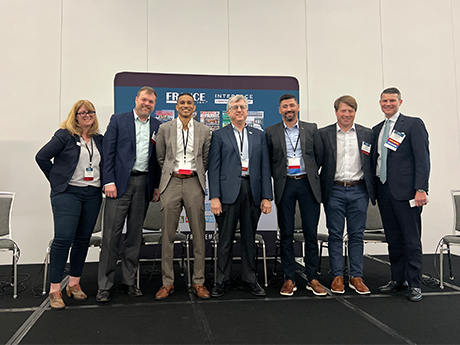ATLANTA — Workforce housing is a hot topic in the multifamily sector. The apartments are designed to serve middle-class renters, with no government subsidies such as tax credits and fewer of the bells and whistles associated with luxury projects.
The combination of the spike in the cost of living, elevated interest rates and a low housing supply has made it difficult for middle-income households across the nation to buy or rent housing. Theoretically, this means there is a large market to serve by building workforce housing communities.
However, while some developers, owners and investors see a world of new opportunities in this sector, others are more skeptical that workforce housing projects can be developed on a larger scale without more support from federal, state and local governments.
This was the topic of discussion during a panel titled “Who is building, developing and investing in the Southeast?” at the inaugural InterFace Affordable Housing Southeast conference. The event was held on Thursday, May 9 at the Cobb Galleria Center in Atlanta. France Media’s InterFace Conference Group and Southeast Multifamily & Affordable Housing Business magazine hosted the conference, which drew about 170 industry professionals.
Workforce Housing Targets the Missing Middle
Workforce housing is designed to target households that earn too much to qualify for most affordable communities, but not enough to afford market-rate housing or to buy a home.
“We’re trying to deliver housing to the ‘missing middle,’” explained Josh Mandell, president and COO of The Gateway Cos., an affordable housing developer and owner-operator based out of Florence, Alabama. “That’s usually the people making about 80 to 120 percent of the area median income (AMI). In some areas, you can go down to 60 percent AMI. That’s the most underserved portion of the population. It’s a golden opportunity for us.”
Despite this, the unfortunate lack of support and incentives for workforce housing projects on the federal and state levels has been an insurmountable hurdle for many developers.
“You don’t see as much happening in that 80 to 120 [percent AMI] range, because there’s not a substantial amount of capital that has come to the table,” said Raymond Kuniansky, chief development officer at developer and property manager Columbia Residential, which is headquartered in Atlanta and specializes in affordable housing.
“Not a lot of developers and investors are willing to take a lower return to serve that part of the population,” Kuniansky added. “There are no programs in place to encourage people to move forward and do something. I think that’s the dilemma we’re facing.”
How Can Workforce Housing Find Success?
Workforce housing developments are often made possible through programs like Freddie Mac’s Workforce Housing Preservation offering, which provides funds for the development and preservation of units rented to residents earning at or below 120 percent of AMI. Programs such as these, however, have not been enough to fill the gap for America’s missing middle.
“There is a middle-income tax credit program that’s being talked about,” said Nick Andersen, senior vice president and project partner at Dominium, an Atlanta-based developer, owner and manager of affordable housing. “We should all be advocating for that. We’ll see what happens with it, but that would add to the options that developers would have.”
Last December, both houses of Congress proposed a bill to establish a Workforce Housing Tax Credit (WHTC) to complement the existing Low-Income Housing Tax Credit (LIHTC). The legislation would offer tax credits to developments wherein 60 percent of the project’s units are occupied by tenants earning less than 100 percent of the area median income.
After the legislation was introduced, accounting and consulting firm Novogradac estimated the tax credit could finance approximately 344,000 rental units. The bill has been assigned to a committee, but has not progressed further than that.
“There are resources out there for the developments planning to rent at zero to 60 percent AMI,” said Amon Martin, regional vice president of Pennrose, a Philadelphia-based developer of affordable, mixed-use and market-rate assets. “Figuring out the non-LIHTC deals for those 80 to 100 percent AMI communities would be like finding a unicorn. It’s going to take a lot of local and federal support to start seeing some real success in that area.”
The developers, owners and investors panel at InterFace Affordable Housing Southeast also included Jonathan Toppen, president of Tapestry Development, an affordable housing developer headquartered in Decatur, Georgia; and Maureen Freehill, director of National Church Residences, a developer of affordable seniors housing that is based in Atlanta. Cody Wilson of Minneapolis-based investment bank Piper Sandler & Co. moderated the panel.
— Channing Hamilton


